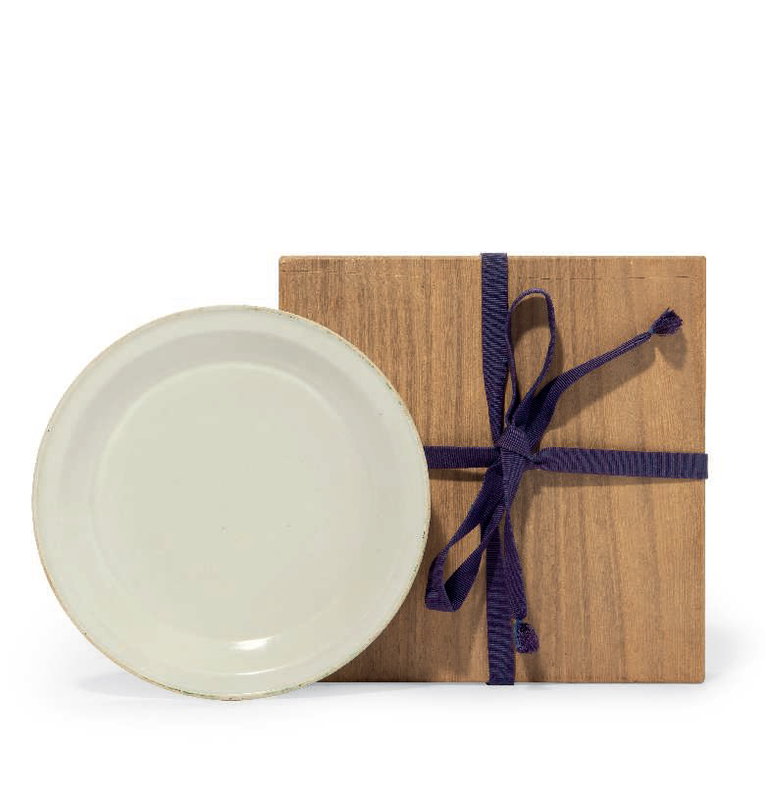The dish has shallow, rounded sides rising to the flat, everted rim, and the interior bears traces of gilding with four evenly-spaced characters, shou shan fu hai (mountains of longevity and oceans of fortune). The dish is covered overall with a lustrous glaze of ivory color below the unglazed mouth rim, Japanese wood box.
Provenance: Mayuyama & Co., Ltd., Tokyo.
Kitayama Fine Arts, Tokyo.
Literature: Junkichi Mayuyama, Mayuyama, Seventy Years, vol. 1, Tokyo, 1976, p. 125, no. 361.
Tokyo Bijitsu Club, Mayuyama Ryusendo, Olympic Kinen, Kobijutsu Tenkan Tokubetsu Sokubaikai,Chugoku Toji Tenkan Zuroku, 8-12 October 1964, p. 14, no. 24.
Exhibited: Tokyo Bijitsu Club, Mayuyama Ryusendo, Olympic Kinen, Kobijutsu Tenkan Tokubetsu Sokubaikai,Chugoku Toji Tenkan Zuroku, 8-12 October 1964.
Note: Gilt-decorated Ding dishes are extremely rare and few appear to have been published. Compare the gilt-decorated Ding dish in the Palace Museum, Beijing, illustrated in Selection of Ding Ware: The Palace Museum’s Collection and Archeological Excavation, Beijing, 2012, pp. 186-86, no. 76. The Palace Museum dish is of similar shape and size to the present lot, but its gilt-decoration is now indecipherable. The author notes that only approximately ten gilt-decorated Ding ceramics are in existence and it is very rare for them to still have traces of the gilding.
Christie's. Fine Chinese Ceramics and Works of Art, New York, 13 - 14 September 2018

/https%3A%2F%2Fprofilepics.canalblog.com%2Fprofilepics%2F1%2F0%2F100183.jpg)
/https%3A%2F%2Fstorage.canalblog.com%2F03%2F02%2F119589%2F96711876_o.jpg)
/https%3A%2F%2Fstorage.canalblog.com%2F11%2F31%2F119589%2F94773502_o.jpg)
/https%3A%2F%2Fstorage.canalblog.com%2F20%2F83%2F119589%2F94772815_o.jpg)
/https%3A%2F%2Fstorage.canalblog.com%2F26%2F72%2F119589%2F75604929_o.jpg)
/https%3A%2F%2Fstorage.canalblog.com%2F59%2F60%2F119589%2F26458628_o.jpg)




/http%3A%2F%2Fstorage.canalblog.com%2F63%2F90%2F119589%2F129042528_o.png)
/http%3A%2F%2Fstorage.canalblog.com%2F28%2F46%2F119589%2F128715587_o.jpg)
/http%3A%2F%2Fstorage.canalblog.com%2F21%2F69%2F119589%2F128475813_o.jpg)
/http%3A%2F%2Fstorage.canalblog.com%2F19%2F09%2F119589%2F126883420_o.jpg)